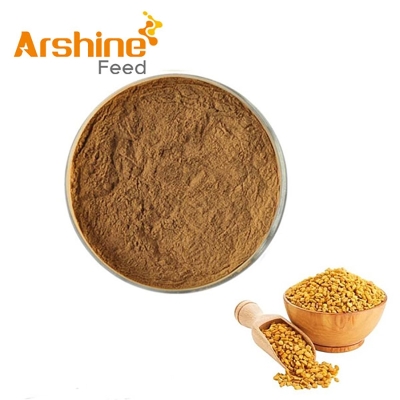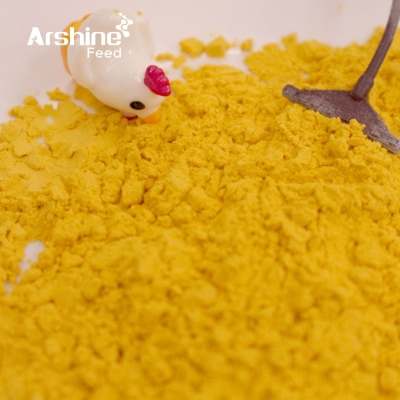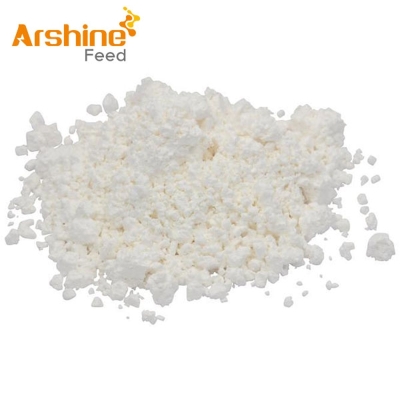-
Categories
-
Pharmaceutical Intermediates
-
Active Pharmaceutical Ingredients
-
Food Additives
- Industrial Coatings
- Agrochemicals
- Dyes and Pigments
- Surfactant
- Flavors and Fragrances
- Chemical Reagents
- Catalyst and Auxiliary
- Natural Products
- Inorganic Chemistry
-
Organic Chemistry
-
Biochemical Engineering
- Analytical Chemistry
- Cosmetic Ingredient
-
Pharmaceutical Intermediates
Promotion
ECHEMI Mall
Wholesale
Weekly Price
Exhibition
News
-
Trade Service
new development in the production and application of broiler biofeed additives
eUHCai Huiyi, Liu Guohua, Chang Wenhuan, Zhang Wei, Bo Haijie
eUH(Feed Research Institute of the Chinese Academy of Agricultural Sciences, Beijing 100081)
eUHsummary: Biofeed Additives is currently a global research and development hot spot, is the main means of producing green, organic and other high-end animal products. This paper summarizes the progress and development trend of the production and application of key products in the field of feed enzymes, microbial feed additives (probiotics), prebiotics, natural plant extracts and other biofeed additives.
eUH .Keywords: enzyme preparation; prebiotics; prebiotics; prebiotics; natural plant extracts; production technology; Application technology in the graph classification number: S816.7 document identification code: A article number: 1004-6364 (2015) 04-37-03 biological feed additives are currently the focus of global research and development, is the production of green, organic and other high-end animal products main means. It shows great prospects and strategic significance for the development of feed resources in China, ensuring feed safety and animal product safety, promoting pollution reduction and solving environmental problems.
eUH .The types of biological feed additives include: feed enzymes, microbial feed additives, functional protein peptides, functional amino acids, organic trace elements, plant and microbial extracts, prebiotics, fermentation and enzyme feed and other biotechnology-related products. This paper summarizes the research progress and future development trend of the production and application of key products in the field of biofeed additives.
eUH .1· Feeding enzyme preparation production and application technology
eUH 1.1 The single enzyme varieties currently allowed in China include: phytoenzyme, protease, xylitose, beta-glutamate, alpha-glucolyse, beta-glucotose, glucose oxidase, amylase, agcelerase, lipase, maltose, pecastose, cellulas, etc.
eUH .1.2 Application of enzymes in broiler production
eUHin improving livestock and poultry production performance: many studies have focused on production efficiency. The results of recent years show that the addition of single enzymes including phytose, semi-lactose sideside enzyme, glucolyse, glucotose, glutamate, glucose oxidase and so on has produced positive effects. The performance is: to improve the average daily food harvest of animals, the average daily weight gain, improve the feed conversion rate of 1 to 6.
eUH .1.3 Research and application of new feed enzymes
eUHAt present, the research and development of new feed enzymes focuses on high temperature enzymes, low temperature enzymes and high ratio living enzymes, followed by the research and development and application of compound enzyme preparations, and thirdly, the production technology and application methods of several new enzymes such as quenching enzymes and glucose oxidase. Hardened enzyme is a newly developed enzyme by the Feed Research Institute of the Chinese Academy of Agricultural Sciences, which can be a group-sensing regulation of microbial gene expression: assisting pathogen infection and progenitor; The experiment s7 by Zhang Zhigang and others shows that the application of quenching enzyme in broiler production can reduce the meat and chicken meat ratio by 3.65%, and obviously improve the economic benefits of broiler.
eUH . 1.4 Application technology of compound enzymes
eUH combined with the results of recent years, found that the compound enzymes (such as gastritas, alpha-amylase, beta-amylase and other 11 enzymes) in broiler, egg chicken, duck, goose and other single-stomach animals have produced positive effects, showing increased the average daily weight gain of animals and improved feed conversion rate.
eUH . In terms of monoenzyme interaction effect in compound enzyme formulations, Yan and others added compound enzymes (1,000 U xylitosase, 75 U beta-glucanase and 12.5 U-alpha semi-lactase) to wheat-DDGS-type chicken diet, significantly reducing the viscosity of digestive tract foods by 26%, significantly improving feed conversion rate (P.02 to 0.04), but without the interaction between the three enzymes. Gareis et al. have shown that there is an interoperability effect between the compound enzyme formulation and the energy of the diet. Studies have confirmed that the effect of the compound enzyme is related to the type of diet type and the concentration of the substrate.
eUH . 1.5 The factors affecting the application of enzymepreparations should give full play to the role of compound enzyme preparations, in addition to considering the target animal, physiological stage, daily grain type and other factors, more important lying at feed production and processing technology. In production practice, the effect of using enzyme agents in powderisers is significantcompared with particulate sin, mainly because enzymes are sensitive to temperature. If the granulation temperature exceeds 85 degrees C, the spray technique of liquid enzyme preparation after granulation should be used to avoid the adverse effects of high temperature steam on enzyme activity. At present, domestic researchers use the genetically modified technology of bacteria to produce an acid enzyme, to solve the problem of high temperature resistance of enzyme preparations, this kind of naked enzyme without the need for encapsulation, has great potential for development.
eUH . 1.6 Trends in the production and application of enzymes
eUH 1.6.1 Production Technology
eUH 1.6.1.1 Genetic Design Technology
eUH new method of using protein structure seisphers to obtain new structures and functions that do not exist in nature. After determining the design target and the initial sequence, the sequence is initially modified by structural prediction and modeling, then the enzyme gene expression or polypeptide synthesis is carried out, and then the original design is modified by the structural function test results.
eUH . 1.6.1.2 Enzyme expression gene modification technology
eUH one is a multi-point fixed-point mutation technology: fixed-point mutation is one of the important technologies used in protein engineering, but in the past, generally each time can only introduce a single point mutation, mutation efficiency is low, so multi-point mutation technology research becomes a hot spot. Second, enzyme-oriented evolution technology: the main principles of its utilization are gene-encrusted enzymes, error-prone PCR and DNA in vitro random splicing technology. Genetic modification of enzyme genes using the targeted evolution of enzymes may lead to mutant asases and mutant strains with special properties.
eUH . 1.6.1.3 Cloning and expression of gene of excellent target enzyme properties
eUH With the completion of physical mapping and DNA sequencing of more and more species genomes, the improvement of DNA recombination technology and the accumulation of various protein structure and functional relationship data, people can largely break through the limitations of natural enzyme defects, by cloning and modifying various functional genes to make them effectively expressed in microorganisms, and then by optimizing fermentation process to obtain low-cost quality products.
eUH . 1.6.2 Application technology
eUH to affect the application of feed enzymes to the key to the best results, we must pay attention to the following aspects: (1) feeding enzyme addition, is to choose in vitro digestion or work in animals; The dynamic application technique of enzyme preparation with animal growth change, the study of the difference of enzyme formulation of the same animal at different growth stages, (4) the antagonistic relationship between the single enzyme agents in the complex enzyme and the application of the addition of compound enzyme preparations on the micro-ecological environment of different motor intestines, and (5) the application method of high temperature and naked enzyme preparation.
eUH . 2. Microbial feed additive production and application technology
eUH microbial feed additives or feed microorganisms, commonly known as probiotics, in China has been more than ten years of development, however, there has been a backward application of technology research and development, industry standards development backward and other obstacles to the development of this field.
eUH . 2.1 In improving the body's immunity, improve production performance
eUH Hu Shunzhen and other reports, composite micro-ecological preparations can improve the production performance of broiler chicken, improve its intestinal microbial environment, improve its antioxidant capacity, enhance the immune function of broiler.
eUH . Many researchers have explored the effects of fecal enteritus bacteria, Lactobacillus acidophilus, Lactobacillus Bulgarian, Lactobacillus cheese, plant Lactobacillus, and new methods of application on the production performance of broilers, and the comprehensive results show that their application can increase the average daily weight gain; The weight ratio and diarrhea rate, which have a growth-promoting effect on chicks, can increase the number of chickens enterophilus lactobacillus and Bifidobacteria, reduce the number of E. coli and salmonella in the intestines and proliferate, and thus increase the absorption of glucose and small peptides. How to use compound bacteria in feed: The results of the experiments on broilers, such as Bifidobacteria, Bulgarian Lactobacillus, Thermofichestine Streptococcus, Bacillus grass spores and wine yeast, respectively, show edifying the growth of broilers, increasing the survival rate of broilers, and reducing the number of E. coli in the colorectal. At the same time, it is emphasized that the probiotic combination enzyme can be an alternative to commonly used antibiotics.
eUH . 2.2 Trends in micro-ecological preparation technology
eUH (1) screen more excellent microorganisms with direct growth-promoting effect, including the modification of the genetic genes of the flora, the selection of excellent strains, and the enhancement of anti-acid, heat and other capabilities.
eUH . (2) Attention should be paid to the study of the mechanism and mode of probiotics from the relationship between animal nutrition metabolism and microbial metabolism.
eUH . (3) Strengthen the research of dosage form processing technology, such as the study of vacuum freeze-dried technology and microcapsule technology protection products, the use of vacuum packaging or nitrogen-filled packaging to extend product technology, improve the concentration of live bacteria and its tolerance to the adverse environment.
eUH . 3. Prebiotic production and application technology
eUH After probiotics, it has been found that many polysaccharides or oligosaccharides have the effect of regulating the growth of animal intestinal microbes and affecting the micro-ecological balance, called prebiotics, which are highly valued by researchers around the world.
eUH . 3.1 Application of new polysaccharides in poultry production
eUH a large number of studies show that polysaccharides can be an ideal alternative to antibiotics and have broad research and application prospects in animal husbandry. In recent years involved in the trial of polysaccharides, acetylized glycosac, mushroom polysaccharides, chio-sein polysaccharides, jaundice polysaccharides, white sugar, seaweed polysaccharides, sand onion polysaccharides and other more than 10 kinds, involving 8 kinds of experimental animals, including yellow feather chicken , fast-scale broiler chicken . . . . . . . . . . . . . . . . . . . . . . . . . . . . . . . . . . . . . . . . . . . . . . . . . . . . . . . . . . . . . . . . . . . . . . . . . . . . . . . . . . . . . . . . . . . . . . . . . . . . . . . . . . . . . . . . . . . . . . . . . . . . . . . . . . . . . . . . . . . . . . . . . . . . . . . . . . . . . . . . . . . . . . . . The results show that the application of new polysaccharides in poultry production can improve daily weight gain, improve feed conversion rate, reduce diarrhea rate and reduce death rate. However, the relationship between polysaccharide structure and function, and the dose and effect of polysaccharide still need to be studied in depth.
eUH . 3.2 Application of oligopoly in poultry production
eUH 3.2.1 to promote the formation of beneficial bacteria in the intestines, improve the intestinal structure, prevent harmful bacteria-based oligosaccharides can be used as nutrients by bifidobacteria, Lactobacillus and Bacillus bacteria and other beneficial bacteria metabolism. Probiotic metabolism produces progenic acid is the main energy substance of mucosal membrane metabolism, which promotes normal cell formation. Oligoscancants can significantly increase the height of the animal's intestinal fluff and the thickness of the intestinal wall. Studies such as Shang's study showed that the addition of fructose to broiler diet changed the microbial structure of the broiler's gut, and showed that the number and proportion of Ca and P in the diet affected the gut microbiome population.
eUH . 3.2.2 Improving animal production performance
eUH in recent years, widow sugar in animal production and application effect reported more, by the type of oligosaccharides, the composition of the use of diet, animal age, species, use of dose and other factors. However, the overall results show that it can improve the micro-ecological balance of broiler, chicken, chicken, cherry valley broiler intestine, improve animal digestion and absorption function, improve daily weight gain, improve feed conversion efficiency, improve meat quality and so on. The oligosaccharides involved include: shell oligosaccharides, fructose, wood yora, soy oligosaccharides, etc.
eUH . Other studies have shown that probiotics and probiotics can replace antibiotics and antiglobulins, change the micro-ecological balance of the intestine, improve the potential of the small intestine, and change the development of intestinal tissue. There was no significant effect on the amount of food, feed conversion rate, mortality rate, etc., and the growth of broiler chickens could be compensated back later.
eUH . 4 Natural plant extract production and application technology
eUH in recent years, natural plant extracts because of its green, pollution-free and environmental protection and other characteristics of domestic and foreign researchers concerned about, and has become one of the main trends in the development of green feed additives. In particular, with the introduction of the European Union and some countries to limit or disable antibioticregulation, natural plant extract feed additives have been used as the feed of the first choice of antimicrobial antimicrobials, and become one of the focus of research.
eUH . 4.1 The role of natural plant extracts in the production of broilers. <







